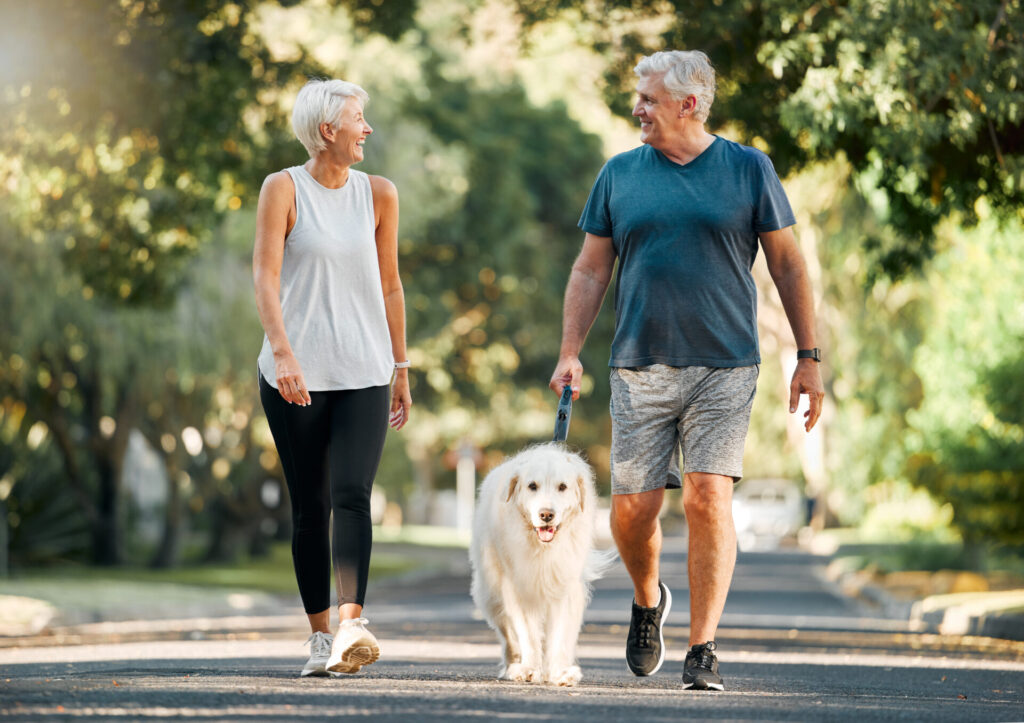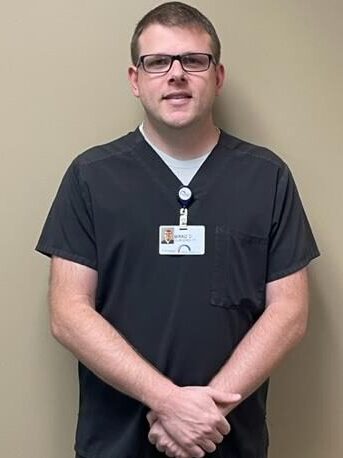Risk Factors, Screenings and Prevention

Bone is living tissue that is broken down and replaced in our bodies continuous throughout life. Osteoporosis is a bone-thinning disease that causes bones to become weaker over time and more likely to break. The disease can affect any bone, but the hip, spine and wrist are most often affected. Osteoporosis is often called a “silent disease” because people can’t feel their bones getting weaker.
Brad Davis, DPT, OCS, MTC, is a physical therapist and physical therapy orthopedic specialist at Claiborne Medical Center, a member of Covenant Health. He serves as the clinical supervisor of the hospital’s rehabilitation programs. Davis says, “Osteoporosis refers to bones that have become weak or brittle. Bones can become so brittle that a fall, bending over, or even coughing can cause a bone break or fracture.”

He confirms that researchers don’t know the exact cause of osteoporosis, but many factors contribute to the disease. Men and women older than age 50 are at the greatest risk for bone-thinning and osteoporosis. “Because of hormonal differences, women are four times more likely than men to develop osteoporosis,” Davis says. Race, weight, age and genetics also can be factors in developing the condition.
Symptoms of Osteoporosis
“Osteoporosis typically has no symptoms,” says Davis. “However, if the bone gets weak enough it can cause back pain from a broken or collapsed bone, loss of height, stooped posture and bones that break more easily.”
Many people don’t know they have osteoporosis or bone-thinning disease until they have advanced symptoms such as a broken hip or wrist, low back pain or a hunched back. Some may have pain in their bones and muscles, particularly in their back. Sometimes a collapsed vertebra may cause severe pain, decrease in height or spinal deformity.
The symptoms of osteoporosis may look like other bone disorders or health problems, so it’s important to talk with a healthcare provider for a diagnosis.
Osteoporosis vs. Osteopenia
Osteopenia describes a lower bone density than normal, but not low enough to be diagnosed as osteoporosis. While both conditions affect the strength and health of your bones, the difference between them is the level of bone damage. Osteopenia can be a precursor to developing osteoporosis if left untreated.
Is Osteoporosis Genetic?
“Osteoporosis can affect anyone, but females who are postmenopausal are at especially high risk because of hormones,” Davis says. He explains there is a strong genetic component to osteoporosis, so knowing your hereditary traits and family history can help you understand your risk factors. Additional factors that can worsen osteoporosis include a sedentary lifestyle, poor dietary habits and frequent tobacco/alcohol use.
“The older we get, the higher risk we have for osteoporosis,” Davis says. “In addition to women being more affected, people of white or Asian descent are at a higher risk. Hormone levels are important, as low testosterone for men and low estrogen for women can hasten bone loss. Some medications for other health conditions also can increase your risk for osteoporosis.”
Who is at Risk for Osteoporosis?
Women are more likely to get osteoporosis than men. Factors that may put you at risk for osteoporosis include:
- Age. Bones become less dense and weaker with age.
- Race. White and Asian women are most at risk, but all races may get the disease.
- Body weight. People who weigh less and have less muscle are more at risk for the condition.
- Lifestyle factors. Lack of physical activity, caffeine, heavy alcohol use, smoking, low levels of dietary calcium, and vitamin D deficiency may all increase your risk.
- Certain medicines. Some medicines may increase your risk, such as long-term use of corticosteroids, thyroid hormone replacement medications and immunosuppressant drugs.
- Family history. Having a family history of bone disease may increase your risk.
- Low bone mass (osteopenia) also puts you at a greater risk for osteoporosis.
- Low estrogen is one of the main causes of bone loss in women during and after menopause. Women may lose up to 20 percent of their bone mass in the five to seven years after menopause.
Other Osteoporosis Risk Factors
In addition to the factors above, an adult who weighs less than 125 pounds has an increased risk of osteoporosis. People who undergo bariatric surgery or have kidney failure, irritable bowel syndrome, liver diseases or an eating disorder also have a higher risk.
Other risk factors that may increase your chances for osteoporosis or bone-thinning disease include:
- Small bones
- A past break (fracture), especially after age 50
- Medical conditions such as endocrine or hormonal diseases, gastrointestinal diseases, rheumatoid arthritis, types of cancer, HIV/AIDS, and anorexia nervosa

How Do I Test for Osteoporosis?
The most common test for osteoporosis is a DEXA scan, which stands for dual-energy X-ray absorbtiometry. This simple and painless test measures bone mineral density and strength through a scan of your hips and spine. The US Preventive Services Task Force recommends that women have their first DEXA scan at age 65. The Bone Health and Osteoporosis Foundation also recommends that men be screened at age 70. The test may be recommended earlier if an individual has significant risk factors or a fracture has occurred after age 50.
DEXA scan results are measured in units called “T-scores”:
- A T-score of 1 or higher indicates healthier, denser bones
- A T-score of 0 represents bone density of a healthy young adult.
- T-scores lower than 0 indicate lower bone density:
- A T-score of –1 to –2.5 indicates low bone mass or osteopenia.
- A T-score lower than –2.5 indicates osteoporosis.
The biggest health risk associated with osteoporosis is a bone fracture – but there are steps you can take to keep the disease from worsening and causing breaks. Several types of physician specialists can treat osteoporosis including family practice doctors, rheumatologists and endocrinologists. Physical therapists can help design a safe and effective exercise routine to minimize bone loss and the effects of osteoporosis.
How to Prevent Osteoporosis
“Bone density or bone strength is very important for decreasing the risk for fractures,” Davis says. “Bone breaks can cause serious pain and disability. Therefore, minimizing the risk of bone breaks is very important.”
To help minimize bone loss,
- Don’t smoke. If you do, talk to your medical provider about ways to quit.
- Minimize or avoid drinking alcohol.
- Get adequate amounts of calcium and vitamin D in your diet. Your physician can help determine recommended levels for your body’s needs.
- While food is the preferred source for calcium and vitamin D, ask your provider if you need to take a vitamin or mineral supplement. General recommendations for preventing osteoporosis are 1,200 mg per day of calcium (not to exceed 2000 mg daily) and 600 international units of vitamin D.
- Be sure to include physical activity in your daily routine – especially weight-bearing exercise.
Davis says, “Weight-bearing exercises such as walking, climbing stairs and dancing are great for strong bones. You can include resistance training exercises with weight machines, bands or free weights. Balance training exercises such as walking backwards, standing with feet together while shifting your body weight backward and forward, and standing on one leg are all helpful.” He notes that you should only perform exercises you know are safe or that have been specifically prescribed for you.
While osteoporosis cannot be reversed, with a healthy lifestyle, regular testing and appropriate treatment, you can slow bone loss and make fractures less likely to occur. If you are at risk for or have osteoporosis, get regular checkups and talk with your healthcare provider about periodic screenings to monitor your bone density.
Covenant Health offers bone density DEXA screenings at multiple locations. Our imaging centers at Covenant Health Diagnostics-West and Covenant Health Diagnostics-South offer discounted cash payment rates for those who are not using insurance. A physician referral is needed. Call 865-374-4000 for information or view a list of our providers if you need a personal physician to help you achieve your best health.
Summary
Osteoporosis is a bone-thinning disease that weakens bones and increases their risk of breaking. The disease has no early symptoms. In fact, the first symptoms are often a fracture of either vertebral bodies in the spine, or bones in the hip or wrist. Early preventive measures can help maintain bone health and strength.
Risk factors for osteoporosis include aging, hormone changes, race, body weight and certain medicines. Women are four times more likely to experience bone-thinning or develop osteoporosis than men because of a decrease in estrogen after menopause. Specialized medicines can help maintain bone health for women with postmenopausal osteoporosis.
The goals of managing osteoporosis are to decrease pain, prevent fractures, and reduce further bone loss. Treatment will depend on symptoms, age, general health and the severity of the condition. Talk to your doctor if you think you need to be screened for osteoporosis.

Covenant Health
Headquartered in Knoxville, Tennessee, Covenant Health is a community-owned, healthcare enterprise committed to providing the right care at the right time and place. Covenant Health is the area’s largest employer and has more than 11,000 compassionate caregivers, expert clinicians, and dedicated employees and volunteers.
